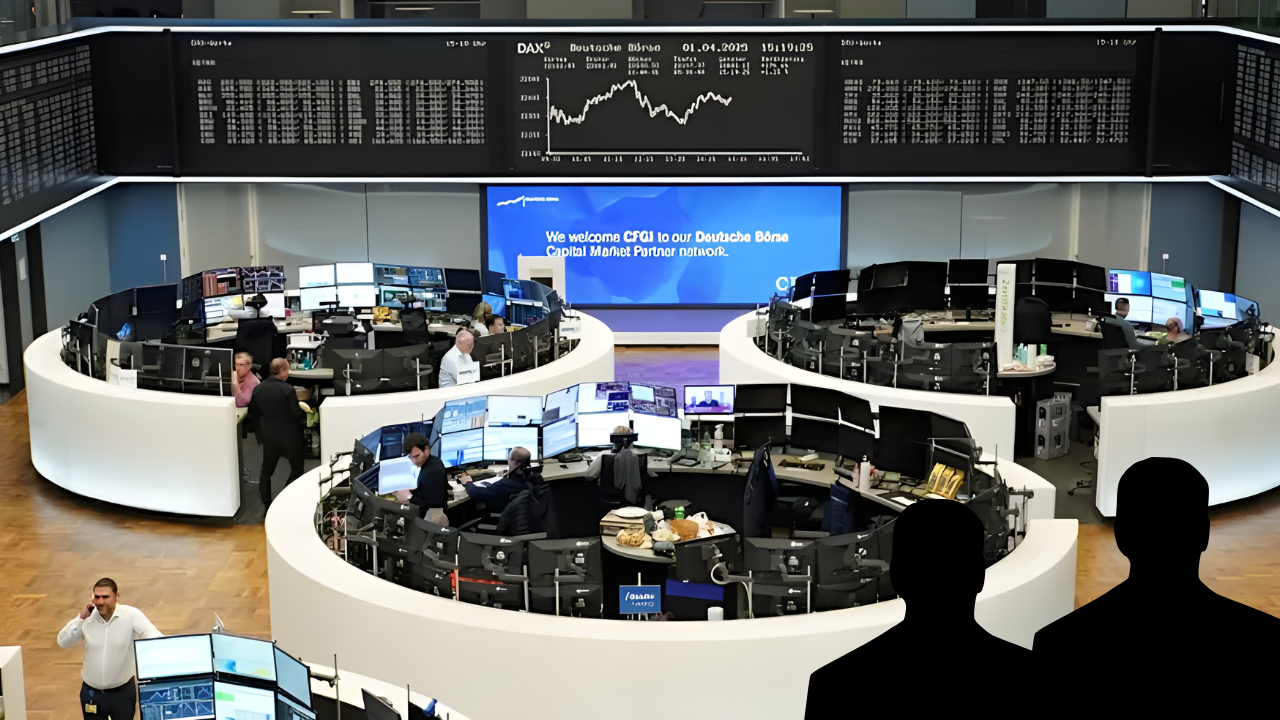
By: Rimi
Published on: Apr 09, 2025
The global financial landscape shuddered on April 9, 2025, as President Donald Trump’s sweeping 104% tariffs on Chinese goods took effect at midnight U.S. time. This aggressive escalation of the U.S.-China trade war has sent shockwaves through markets worldwide, triggering a flight to safety, crushing equities, and upending decades of established trade norms. Investors, already reeling from weeks of volatility, now face a stark new reality: a protracted economic showdown with no clear resolution in sight.
The Trump administration’s decision to impose reciprocal tariffs—including a staggering 104% levy on select Chinese imports—marks the most dramatic escalation in the years-long trade conflict. These measures, framed as a response to China’s alleged intellectual property theft and unfair trade practices, target industries from semiconductors to electric vehicles.
Why This Matters:
Unprecedented Rates: The 104% figure dwarfs previous tariffs, effectively pricing many Chinese goods out of the U.S. market.
Supply Chain Chaos: Companies reliant on Sino-American trade now face impossible choices: absorb crippling costs or overhaul global supply chains.
Retaliation Risks: China has vowed “forceful countermeasures,” with analysts predicting tariffs on U.S. agriculture, tech, and energy exports.
Investors’ worst fears materialized as Asian markets opened deep in the red. Key indices plummeted:
Shanghai Composite: -5.2% (worst single-day drop since 2022)
Hang Seng: -4.8%
Nikkei 225: -3.9%
European futures mirrored the panic, with Euro Stoxx 50 futures down 3.1% and FTSE 100 futures sliding 2.7%. The relief rally from earlier in the week evaporated as optimism over last-ditch negotiations collapsed.
With risk appetite evaporating, investors flooded into traditional safe havens:
Japanese Yen (JPY): Strengthened 1.8% against the USD, hitting ¥137.20—a 15-month high.
Swiss Franc (CHF): Rose 1.2% to 0.94 per USD, nearing its 2023 peak.
“This isn’t just a risk-off move—it’s a vote of no confidence in the global system,” said HSBC currency strategist Linda Lee. “Markets are pricing in a prolonged standoff.”
The tariff shockwave hit emerging markets (EMs) hardest:
Indonesian Rupiah (IDR): Plunged to 16,950 per USD, a historic low, as exporters scrambled to hedge exposures.
Offshore Yuan (CNH): Tumbled to 7.45 per USD, nearing its 2023 record low, despite PBOC intervention rumors.
Indian Rupee (INR) and Thai Baht (THB): Both slid over 1.5% as EM contagion fears spread.
“EMs are the collateral damage,” warned Morgan Stanley’s EM debt team. “Capital flight and dollar-denominated debt defaults could follow.”
In a baffling twist, U.S. Treasury yields rose despite recession fears:
10-Year Yield: Spiked 21 basis points to 4.38%, its sharpest single-day jump since 2022.
30-Year Yield: Climbed 18 bps to 4.56%.
Typically, investors flock to bonds during crises, pushing yields down. So what’s driving this anomaly?
ING economists identify three factors:
Dollar Distrust: Foreign holders are dumping U.S. assets, fearing protracted volatility.
Inflation Fears: Tariffs could spike consumer prices, delaying Fed rate cuts.
Liquidity Crunch: Margin calls force institutions to sell Treasuries for cash.
“This isn’t your grandfather’s safe-haven play,” said ING’s global head of macro, Carsten Brzeski. “The rules are being rewritten.”
Automakers: Tesla (TSLA) slid 6% pre-market amid Chinese retaliation threats.
Tech: Apple (AAPL) dropped 4.2% as 30% of its components face tariff hurdles.
Retail: Walmart (WMT) fell 3.8% on import cost fears.
Defense Stocks: Lockheed Martin (LMT) rose 2.1% on geopolitical tension bets.
Domestic Manufacturers: Caterpillar (CAT) gained 1.5% as “onshoring” hopes resurface.
The New York Fed’s recession probability model now flashes a 38% chance of contraction within 12 months—up from 24% in March. Key red flags:
Inverted Yield Curve: 3M/10Y spread remains negative since November 2024.
Copper Prices: The “Dr. Copper” benchmark fell 12% YTD, signaling industrial slowdown.
“Markets are pricing in two Fed rate cuts by September,” said CME FedWatch analyst John Hardy. “But if inflation rebounds, the Fed’s hands are tied.”
Trigger: China offers concessions on tech subsidies.
Market Impact: Relief rally lifts S&P 500 by 8–10%.
Trigger: China sanctions U.S. agricultural exports.
Market Impact: Global GDP growth slashed to 1.5% (IMF estimate).
With Trump eyeing a 2024 comeback, trade policy could dominate U.S. campaigns, prolonging uncertainty.
Diversify Geographically: Rotate into EU and Japanese equities less exposed to U.S.-China trade.
Hedge Currencies: Long JPY/CHF positions could offset EM risks.
Commodity Caution: Avoid industrial metals; consider gold (up 14% YTD).
“This isn’t the time for heroics,” cautioned BlackRock CIO Rick Rieder. “Capital preservation is priority one.”
The 104% tariffs have thrust the global economy into uncharted territory. While policymakers scramble to avert a full-blown depression, investors must brace for extreme volatility. As the old adage goes, “In trade wars, everyone loses”—but for agile traders, chaos breeds opportunity.
Comments
No comments yet. Be the first to comment!
Leave a Comment